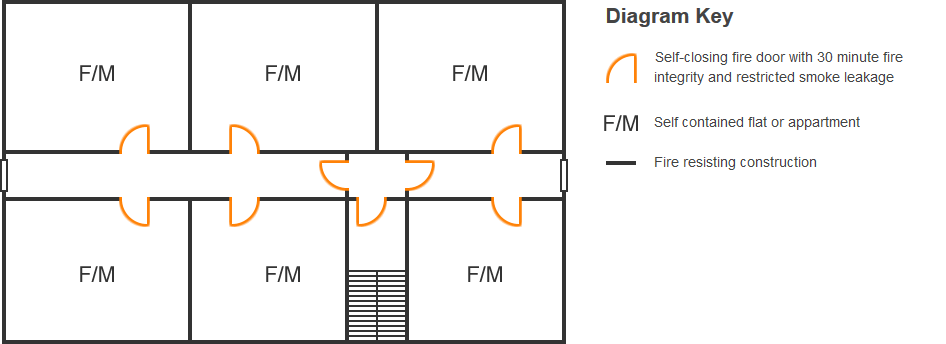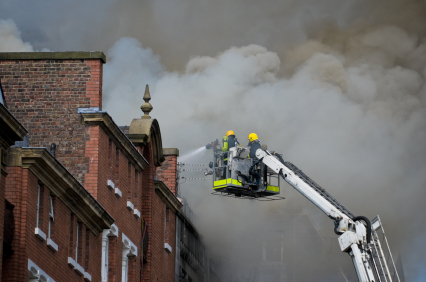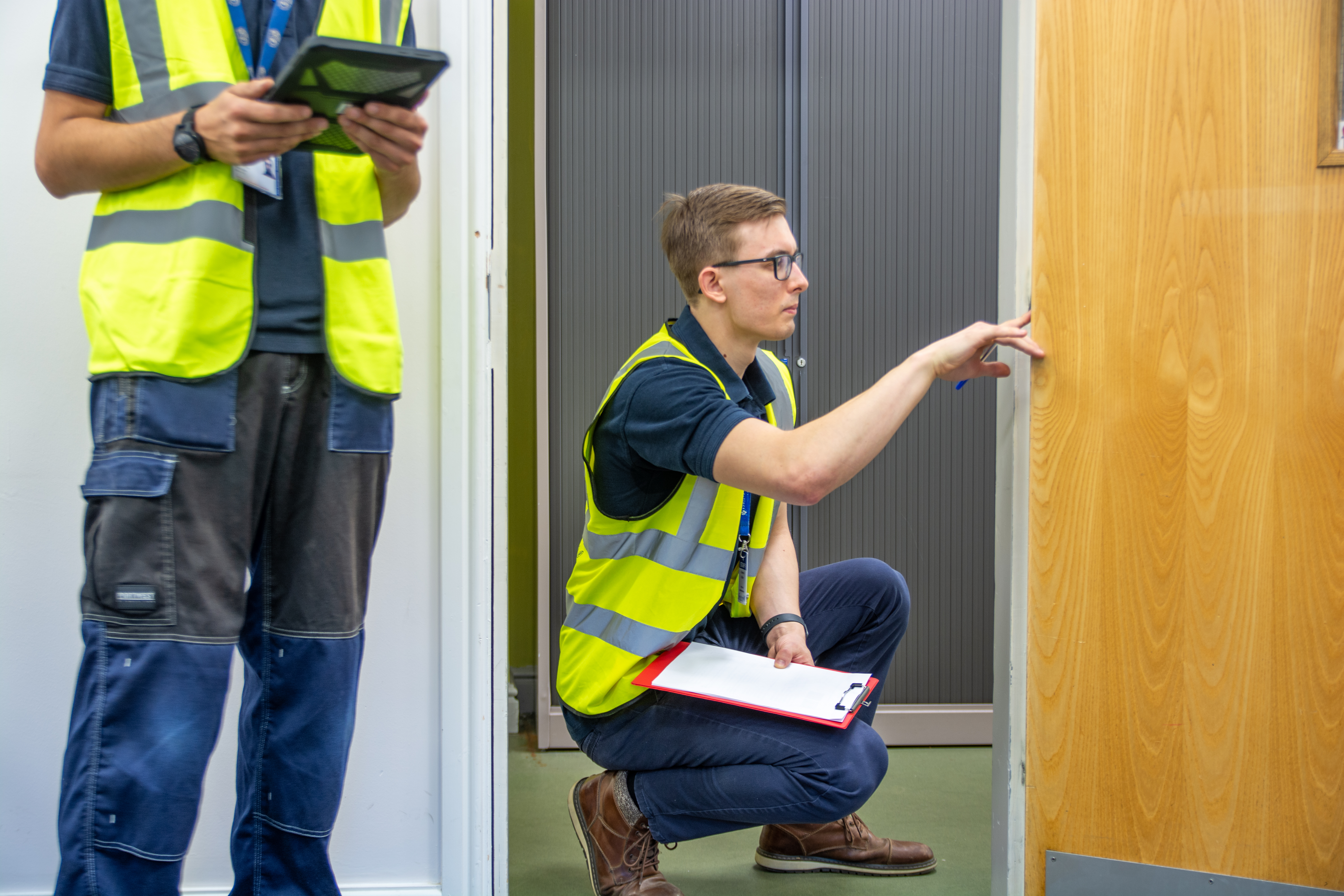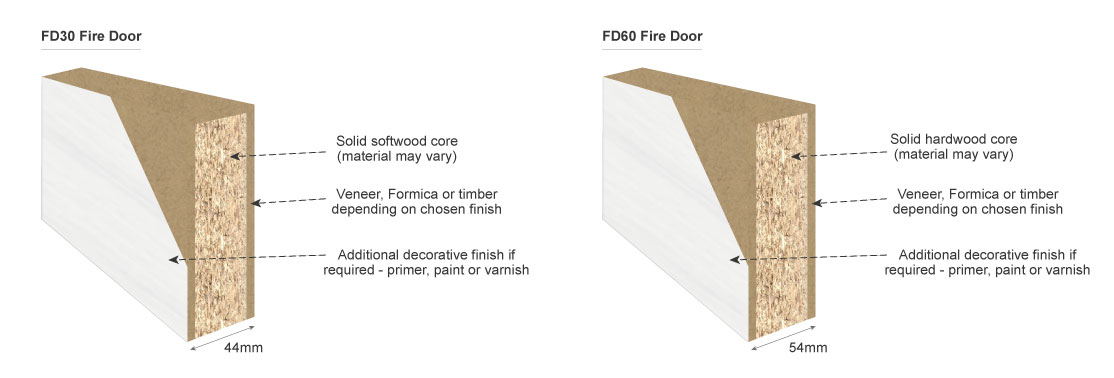-
Contact
Sales & Customer Service
0800 612 6537 support@safelincs.co.uk Live ChatDelivery Enquiries
0800 077 6149 - Resources
Fire & Safety Solutions
CALL OUR TEAM NOW 0800 612 6537
Lines open today 8am - 6pm
Free Delivery
on 100s of Products
Live Chat - Online
Instant help & Advice
Trade Discounts
and exclusive pricing
0% Credit Available
Open an account now
5 Star Customer Feedback
Fire Door Ratings: FD30 or FD60?
Fire doors play a critical role in the fire safety of buildings by slowing down or stopping the spread of fire from one area to another. Fire doors are tested in controlled conditions to determine how effective they would be at preventing the spread of fire and smoke, and the results of these tests determine the door’s ‘rating’.
Fire Door Ratings Explained
FD30: This rating means that the door has been shown to control the spread of fire and smoke for at least 30 minutes when installed correctly.
FD60: This rating means that the door has been shown to control the spread of fire and smoke for at least 60 minutes when installed correctly.
FD30s/FD60s: the 's' after FD30 or FD60 signifies that the door is not only fire resistant, but also able to stop the spread of cold smoke – these doors have smoke brushes and intumescent strips.
FD60 or FD30?
FD60 rated fire doors will prevent the spread of fire for longer than FD30 fire doors. In most cases fire doors leading to escape routes only require an FD30 rating, although in some cases FD60 ratings are required to protect property, assets, and lives. Ultimately, the required rating will depend on the location of the door, as well as the use and layout of the building, and the risks identified in the fire risk assessment. It is essential to determine whether the door can prevent the spread of fire and smoke for long enough to allow the safe evacuation of all occupants.
If the fire risk assessment determines that FD60 doors are required, then legally these must be installed. However, if only FD30 doors are required, then the building manager has a choice – install FD30 doors to meet minimum fire safety requirements, or invest in doors with higher ratings to provide further protection to property and life. The higher the rating of the fire door, the longer the fire will be held back - fire doors are available with fire ratings of up to 240 minutes.
Choosing to install FD60 fire doors when only FD30 doors are required can also ‘future proof’ the building against changes to regulations, or changes to the use and occupancy of the building.
The role of fire doors in passive fire protection
Fire doors are an essential part of the 'fire compartmentation' system provided by walls, floors and ceilings. Examples of a fire compartment are one single flat in a block of flats, an escape corridor at a school, or a staircase at a hospital. Where access to a fire compartment is necessary, the door providing access must be a fire door. This provides fire and smoke resistance to protect people using the corridor, for example, enabling them to safely escape or seek refuge.

The above diagram shows how FD30s fire doors provide fire and smoke compartmentation for each flat. In a building like this, the fire door of each flat is installed to slow down or stop fire spreading from inside the flat out into the corridor. Additional fire doors compartmentalise the corridor and the staircase. Therefore, if a fire breaks out in one flat, there should be thirty minutes of protection to the corridor, and a further thirty minutes to the lobby adjacent to the staircase.
Fire doors installed in critical locations can therefore help to protect escape routes for people to use in a fire emergency. Additionally, the fire doors will protect other parts of the building from fire and smoke damage.
Where are FD30 and FD60 fire doors required?
The most basic requirement for fire safety is that "the building shall be designed and constructed so that there are appropriate provisions for the early warning of fire, and appropriate means of escape in case of fire from the building to a place of safety outside the building capable of being safely and effectively used at all times".
- Fire Safety: Approved Document B*
*This legislation applies in England and Wales: Similar requirements exist in Scotland and Northern Ireland.
Building regulations and fire door ratings
In Appendix C: Fire Doors of Approved Document B: Fire Safety, Table C1 states minimum requirements for fire door ratings depending on the position of the door in the building. Further to this, the size, use and complexity of the building will determine how the minimum fire safety standards may be met:
- In a small, simple building, where safe escape is straight forward, there may be no requirement for fire doors at all.
- In a complex building or where users may require assistance to escape, fire doors with higher fire ratings such as FD60 may be required.

When do building regulations apply?
New buildings or new uses for existing buildings must be designed with fire safety in mind, and must comply with local building regulations. Building regulations set minimum standards for safety, and these must be met as a legal requirement. The regulations also provide guidance about how those standards can be met or indeed exceeded to protect people and property.
Once the building is complete, the owners or managers have a statutory duty to comply with fire safety law. In England & Wales the law that applies is the Regulatory Reform (Fire Safety) Order 2005.
Fire door regulations for different building types
Landlords for rented accommodation must ensure that doors have a suitable rating to manage the fire risk level of the building, and that these doors are maintained. Further guidance on fire doors for flat entrances and inside individual flats is available in the document 'Fire safety in purpose built blocks of flats'.

For businesses and HMOs, current fire safety law places an obligation on the person or entity responsible for the building to take a risk-based approach to fire safety. The 'Responsible Person' must carry out a suitable and sufficient fire risk assessment. This assessment will establish the requirements for fire doors at locations throughout the building. The fire rating for every door must meet the needs of the building’s fire strategy.
Other guidance for various building types is available, while specialist buildings such as hospitals and prisons may need professional guidance to achieve compliance with building regulations.
Maintaining FD30 and FD60 Fire Doors
A fire door will only uphold its rating if it is installed correctly in accordance with the manufacturer’s instructions, and with compatible hardware rated to the same standard as the door. Smoke seals must be installed correctly so that the brush, blade or fin is in contact with the opposing surface of the door or frame. The door and its components must also be maintained throughout its life to remain effective, and to comply with current legislation.
For more information about this, see our fire door maintenance guide.
How do I know what rating my fire door is?

Meeting minimum fire safety requirements is the law for every building, and is essential to protect life and property in the event of a fire. In most cases, a certification label should be found on the fire door, which will include its rating. Visit our help guide for more information about identifying fire doors.
Book a Fire Door Inspection
Book a fire door inspection with one of our BRE certified inspectors, or contact us on 0800 433 4289 for help and advice.
Reviewed: 26/10/2023 (doc:457 V1.1). Our articles are reviewed regularly. However, any changes made to standards or legislation following the review date will not have been considered. Please note that we provide abridged, easy-to-understand guidance. To make detailed decisions about your fire safety provisions, you might require further advice or need to consult the full standards and legislation.




















